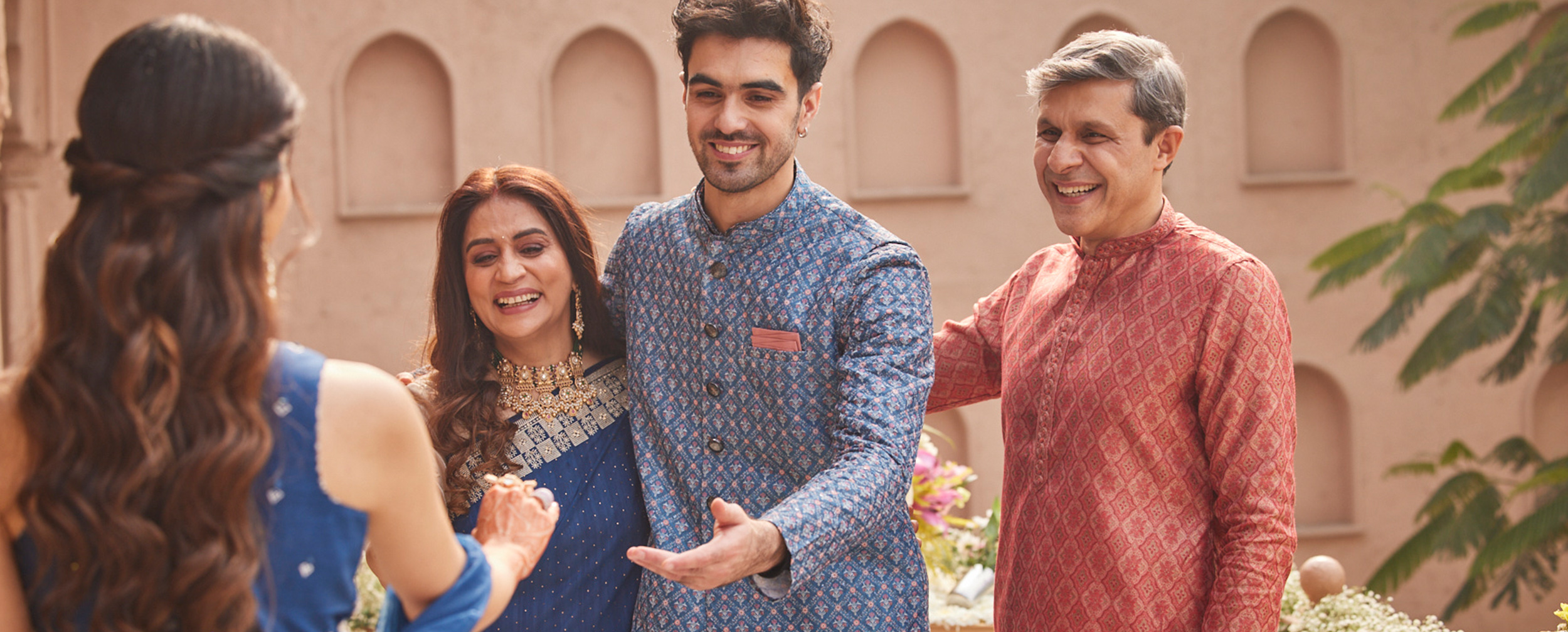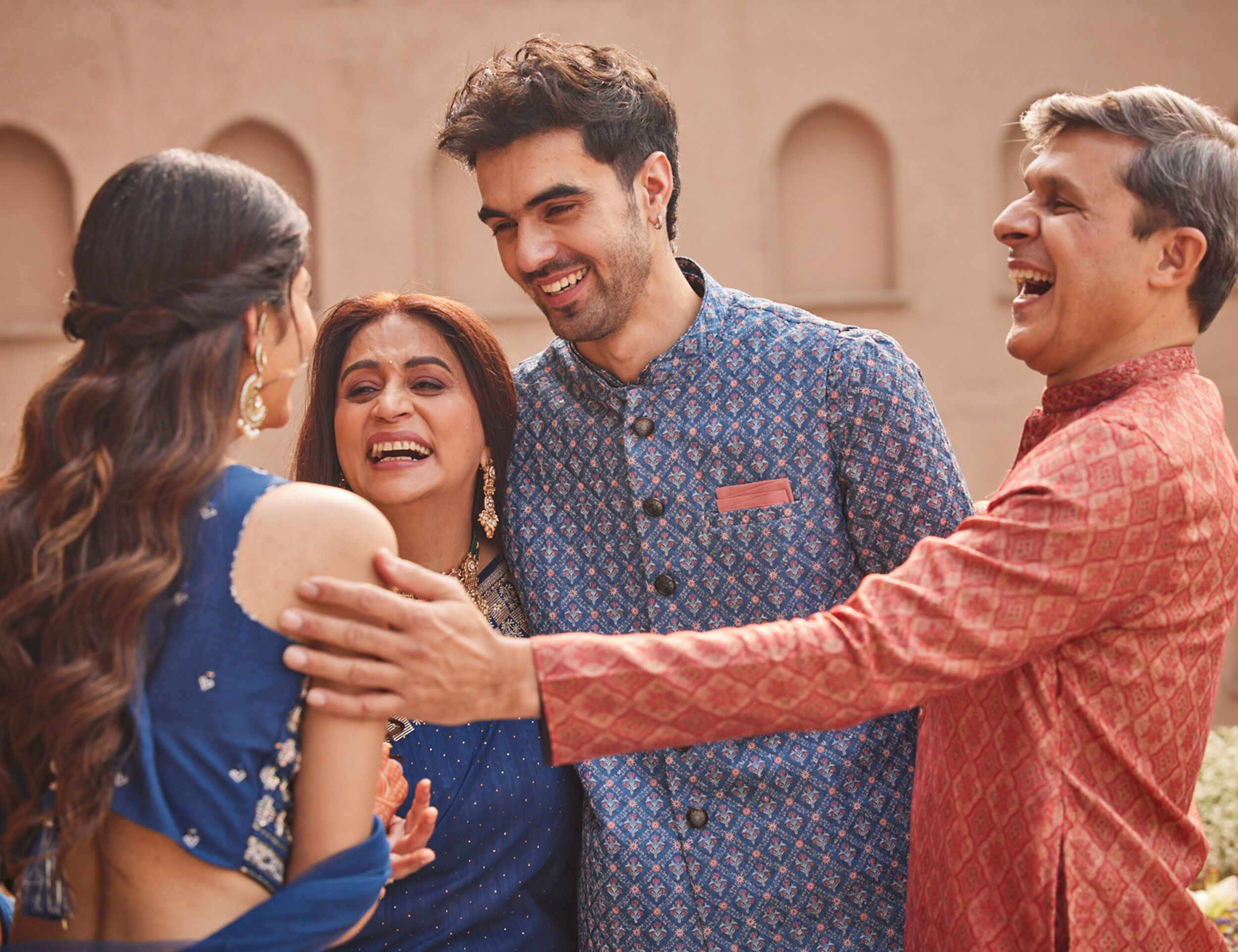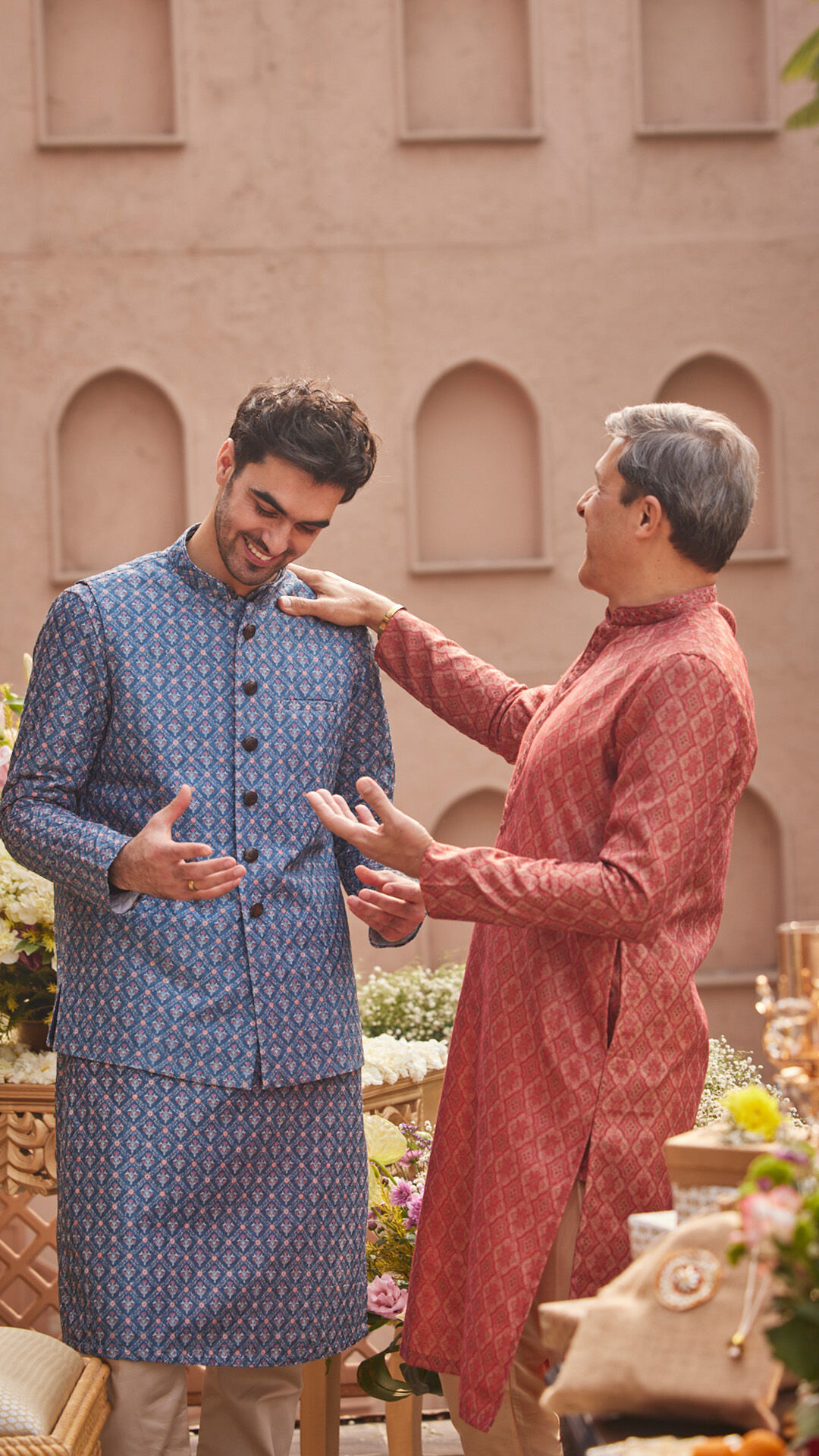STORIES BY MANYAVAR & MOHEY

Lifestyle
Heartwarming Traditions That Make a Sikh Roka Ceremony Special
Date 29 September 2025 Reading time: 7-10 mins
Imagine a crisp Punjab winter morning, the air tinged with the sweet aroma of jalebi and the sound of joyous chatter spilling from a family home. This is the setting for the Sikh Roka Ceremony, a cherished pre-wedding ritual that marks the official beginning of a marriage alliance.
The term "Roka" means "to stop," reflecting how both families pause their search for other matches and embrace this union. It’s an intimate gathering steeped in love, blessings, and anticipation, laying the foundation for the wedding journey ahead.
Whether you’re planning your own roka or preparing to attend one, this guide will walk you through its significance, customs, and celebration tips, ensuring you’re ready to embrace this beautiful tradition.
The Significance of Sikh Roka Ceremony
The Sikh Roka Ceremony carries deep cultural and spiritual weight in Sikh tradition. At its heart, it’s about family approval—a cornerstone of Punjabi life. During this ceremony, the bride’s and groom’s families formally accept the match, making it a public declaration within their community.
Spiritually, the ceremony begins with prayers to the Guru Granth Sahib, grounding the event in Sikh values of faith and unity. This isn’t just a social agreement; it’s a sacred step toward a lifelong partnership.
The Sikh Roka Ceremony traditions emphasise the role of elders, whose blessings and wisdom are seen as vital to the couple’s future. As a Punjabi proverb says, "Rishtey banane mein waqt lagta hai, nibhaane mein zindagi" (It takes time to build relationships, a lifetime to nurture them)—this ceremony is the first thread in that lifelong tapestry.
The Traditional Process of Sikh Roka Ceremony
The ceremony unfolds through a series of meaningful rituals, each rich with symbolism. Here’s how it typically happens:
- Prayers: It starts with "Ardaas," a prayer seeking blessings from Waheguru and the Guru Granth Sahib. This sets a spiritual tone.
- Gift Exchange: Families swap thaalis (decorated trays) filled with sweets like ladoos, dry fruits, and small gifts. This exchange reflects goodwill and the strengthening of ties.
- Tilak Ritual: The bride’s father or brother applies a vermilion tilak on the groom’s forehead, symbolising acceptance. In some families, the groom’s side may do the same for the bride.
- Chunni Ceremony: The groom’s mother or sister drapes a chunni (scarf) over the bride’s head, welcoming her into their family.
These steps, though simple, are profound, blending tradition with emotion to create a memorable event.
What to Expect at a Sikh Roka Ceremony
Attending a Sikh Roka Ceremony offers a glimpse into a warm, family-centric celebration. Usually held at the bride’s home or a private venue, it’s smaller and more personal than a wedding, with close relatives in attendance.
Expect a joyful yet intimate atmosphere. The ceremony kicks off with prayers, followed by the tilak ritual—watch for the emotional moment when the groom receives his mark of acceptance.
Gift exchanges come next, with families presenting thaalis of sweets and tokens of affection. The Sikh Roka Ceremony traditions shine through in these acts, emphasising simplicity and sincerity. You might also catch teary smiles as parents bless the couple, marking the start of a new family bond.
How to Celebrate a Sikh Roka Ceremony
Planning a Sikh Roka Ceremony blends tradition with personal touches. Here’s how to make it special:
- Venue: Traditionally, it’s at the bride’s home, but a cosy banquet hall works too.
- Timing: Pick an auspicious date, often set 1-2 months in advance with input from a Granthi (priest).
- Menu: Serve Punjabi staples like chole bhature, paneer tikka, and sweets like jalebi or pinni. A chaat counter adds a fun twist.
- Attire: The bride might wear a vibrant bridal lehenga or salwar kameez, while the groom opts for a subtle sherwani. Guests can choose festive outfits like Indo-Western wear for women or a classic kurta for men.
- Décor: Keep it simple—marigold flowers, diyas, and a small prayer area reflect Punjabi charm.
For a modern flair, consider photography to capture the day or a small ring exchange (though not traditional). The key is balancing the traditions with your family’s unique style.
The Role of Family and Friends in a Sikh Roka Ceremony
Family and friends are the heartbeat of the ceremony. Elders lead prayers and offer blessings, their presence lending weight to the occasion. Siblings and cousins pitch in with preparations, decorating thaalis or arranging the venue, while friends add laughter and support.
This collective involvement reflects Sikh values of community and togetherness, making the ceremony a shared celebration. The community thrives on these connections, turning a simple ritual into a tapestry of love and unity.
Common Customs and Traditions in a Sikh Roka Ceremony
The Sikh Roka Ceremony is rich with customs that echo Sikh beliefs:
- Tilak: A mark of acceptance placed on the groom’s forehead.
- Gift Exchange: Thaalis of sweets and dry fruits symbolising goodwill.
- Prayers: Ardaas to invoke divine blessings.
- Chunni Ritual: A scarf draped over the bride, welcoming her into the groom’s family.
These traditions are simple yet profound, reinforcing family ties and spiritual grounding. Some families might add personal touches, like gifting a bridal saree to the bride or a kurta pajama to the groom, blending heritage with heartfelt gestures.
Threads of Tradition Woven into Timeless Moments
The Sikh Roka ceremony beautifully marks the beginning of two families coming together in celebration of their children's union. While maintaining its core values of family blessing and formal acceptance, this ceremony has gracefully evolved to accommodate contemporary sensibilities.
Whether you're planning a roka ceremony or attending one, remember that its beauty lies in its simplicity and meaningful traditions. The exchanged glances between families, the nervous smiles of the couple, the blessing of elders – these moments create memories that last a lifetime.
As you prepare for this special milestone, explore Manyavar and Mohey's collection for the perfect attire that honours tradition while embracing contemporary style. After all, the journey of a thousand memories begins with that first, beautifully dressed step!







